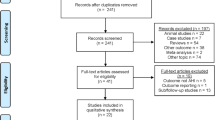Abstract
Obstructive sleep apnea syndrome (OSAS) is characterized by hypotonia of lingual and suprahyoid muscles. Genioglossus muscle is responsible for protrusion and depression of the tongue. Its dysfunction results in occlusion of the upper airways and greater incidence of apnea-hypopnea events during sleep. The aim of this prospective study was to compare the effects of daytime transcutaneous electrical stimulation of the genioglossus muscle and standard continuous positive airway pressure (CPAP) therapy on the quality of sleep, in patients with OSAS. During a 4-week study period, 19 patients with OSAS were subjected to daytime transcutaneous electrical stimulation of the genioglossus muscle before sleep and another 19 subjects underwent standard CPAP therapy. Polysomnography (apnea-hypopnea index, AHI), Epworth Sleepiness Scale (ESS) and Pittsburgh Sleep Quality Index (PSQI) were used to diagnose OSAS and to verify the efficacy of both treatments. Electrical stimulation treatment was reflected by a decrease in PSQI (p = 0.012) but did not influence ESS and AHI values (p > 0.05). In turn, CPAP therapy resulted in a significant decrease in ESS and AHI values (p < 0.001) but exerted no effect on PSQI (p = 0.089). Despite improvement of sleep quality, electrical stimulation does not seem to reduce AHI values in patients with OSAS. Daytime electrical stimulation can be considered as an adjunct treatment in OSAS. Future prospective studies should center on the identification of patients with OSAS who may benefit most from transcutaneous electrical stimulation.


Similar content being viewed by others
References
Franklin KA, Lindberg E (2013) Obstructive sleep apnea is a common disorder in the population-a review on the epidemiology of sleep apnea. J Thorac Dis 7:1311–1322
Peppard PE, Young T, Barnet JH et al (2013) Increased prevalence of sleep-disordered breathing in adults. Am J Epidemiol 177:1006–1014
Edwards BA, White DP (2011) Control of the pharyngeal musculature during wakefulness and sleep: implications in normal controls and sleep apnea. Head Neck 33:S37–S45
McSherry D, O’Connor C, McNicholas T et al (2012) Genioglossus fatigue in obstructive sleep apnea. Respir Physiol Neurobiol 183:59–66
Chwieśko-Minarowska S, Minarowski Ł, Kuryliszyn-Moskal A et al (2013) Rehabilitation of patients with obstructive sleep apnea. Int J of Rehabil Res 36:291–297
Basoglu OK, Midilli M, Midilli R et al (2012) Adherence to continuous positive airway pressure therapy in obstructive sleep apnea syndrome: effect of visual education. Sleep Breath 16:1193–1200
Lequeux T, Chantrain G, Bonnand M et al (2005) Physiotherapy in obstructive sleep apnea syndrome: preliminary results. Eur Arch Otorhinolaryngol 262:501–503
Freire AO, Sugai GCM, Togeiro SM et al (2010) Immediate effect of acupuncture on the sleep pattern of the patients with obstructive sleep apnoea. Acupunct Med 28:115–119
AASM Manual of the Scoring of Sleep and Associated Events: Rules, terminology and Technical Specification version 2.1 (2014)
Steier J, Seymour J, Rafferty GF et al (2011) Continuous transcutaneous submental electrical stimulation in obstructive sleep apnea. Chest 140:998–1007
Kezirian EJ, Boudewyns A, Eisele DW et al (2010) Electrical stimulation of the hypoglossal nerve in the treatment of obstructive sleep apnea. Sleep Med Reviews 14:299–305
Johns MW (1991) A new method for measuring daytime sleepiness: the Epworth sleepiness scale. Sleep 14:540–545
Buysse DJ, Reynolds CF, Monk TH et al (1989) The Pittsburgh sleep quality index (PSQI): a new instrument for psychiatric research and practice. Psychiatry Res 28:193–213
Petrie A, Sabin C (2005) Medical statistics at a glance, 2nd edn. Blackwell Publishing Ltd, Oxford
Akinnusi M, Saliba R, El-Solh AA (2012) Emerging therapies for obstructive sleep apnoea. Lung 190:365–371
Eastwood PR, Barnes M, Walsh JH et al (2011) Treating obstructive sleep apnea with hypoglossal nerve stimulation. Sleep 34:1479–1486
Strollo PJ, Soose RJ, Maurer JT et al (2014) Upper-airway stimulation for obstructive sleep apnea. N Eng J Med 370:139–149
Campbell T, Pengo MF, Steier J (2015) Patients’ preference of established and emerging treatment options for obstructive sleep apnea. J Thorac Dis 7:938–942
Acknowledgments
This study was funded by Grant nr 144-09921P.
Author information
Authors and Affiliations
Corresponding author
Ethics declarations
Conflict of interest
Authors declare that they have no conflict of interest.
Ethical standards
All procedures performed in studies involving human participants were in accordance with the ethical standards of the institutional and/or national research committee and with the 1964 Helsinki declaration and its later amendments or comparable ethical standards.
Informed consent
Informed consent was obtained from all individual participants included in the study.
Rights and permissions
About this article
Cite this article
Chwieśko-Minarowska, S., Minarowski, Ł., Szewczak, W.A. et al. Efficacy of daytime transcutaneous electrical stimulation of the genioglossus muscle in patients with obstructive sleep apnea syndrome: short report. Eur Arch Otorhinolaryngol 273, 3891–3895 (2016). https://doi.org/10.1007/s00405-016-4047-9
Received:
Accepted:
Published:
Issue Date:
DOI: https://doi.org/10.1007/s00405-016-4047-9




